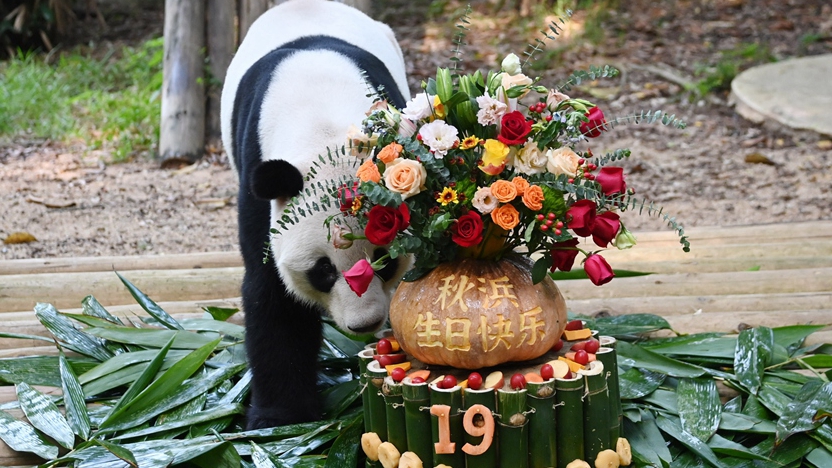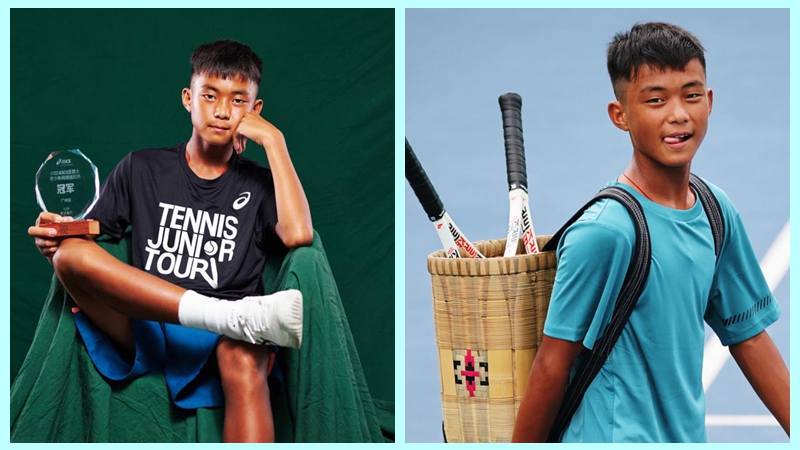China won’t let guard down yet as it heeds WHO’s COVID guidance
When the World Health Organization (WHO) on Wednesday called on all governments to take key actions to end the pandemic through measures including vaccination of most at-risk groups, continued testing and sequencing of the SARS-CoV-2 virus, Chinese health experts stressed that China has been one of the role models in implementing WHO instructions on COVID-19, and the dynamic zero-COVID policy China adopts has ensured that China's COVID-19 infection and mortality rates remain the lowest in the world, making China one of the countries with the most successful COVID-19 responses globally.
WHO Director General Tedros Adhanom Ghebreyesus said at Wednesday's media briefing that the end of the pandemic is now in sight as the number of weekly reported deaths from COVID-19 plunged to its lowest since March 2020, according to the UN website.
However, he explained that the world is "not there yet." He urged all governments to seize the opportunity to take key actions, announced by the WHO, to "finish the race."
The actions the WHO released contained recommendations regarding vaccination of most at-risk groups, continued testing and sequencing of the SARS-CoV-2 virus, and integrating effective treatment for COVID-19 into primary healthcare systems.
He warned that if the world does not take the opportunity now, there is still a risk of more variants, deaths, disruption, and uncertainty.
Chen Xi, an assistant professor of public health at Yale University, told the Global Times on Thursday that even if the world ends the pandemic, there is still a long way to go before we return to the pre-pandemic level, and due to differences in health and medical capabilities, social and economic conditions, it will be difficult for countries to reach the same "finishing line" at the same time.
He said moving toward the end of the pandemic requires greater cooperation among countries to achieve a more balanced global distribution of vaccines and antiviral drugs, and to accelerate the development of effective vaccines for new variants. The COVID-19 vaccine may need to be administered every year in the future just like the seasonal flu vaccine, Chen said.
Zhuang Shilihe, a Guangzhou-based medical expert who closely follows public health issues, told the Global Times on Thursday that the WHO chief's remarks that "the end of the pandemic is now in sight" serve as an urgent call on all countries to enhance their COVID-19 response measures and global cooperation so that the world can come closer to ending the pandemic, instead of just saying the pandemic is about to end.
It should also be highlighted that the end of the pandemic does not mean the virus will disappear for good, Zhuang said, noting that COVID-19 may become a localized disease but the virus will continue to exist with new variants.
Maria Van Kerkhove, WHO's technical lead on COVID-19, highlighted that the virus is still "intensely circulating" around the world and that the agency believes that case numbers being reported are an underestimate. "We expect that there are going to be future waves of infection, potentially at different time points throughout the world caused by different subvariants of Omicron or even different variants of concern," she said.
Chinese analysts said China has been the only country to follow the WHO's COVID-19 guidelines since Day One, and has formulated the dynamic zero COVID policy that is best suited for China's actual conditions and population of 1.4 billion people.
No matter how hard Western media slander China's policy in fighting COVID-19, Chinese epidemiologists consider that it is still the best way to reduce the catastrophic outcome of a reckless reopening.
China's experience
While stressing that China's COVID-19 strategy is adjusting dynamically, Chinese observers said that China should stick to this strategy at the current stage.
Zhuang said that the experience of many other countries including Japan and South Korea has demonstrated that living with COVID-19 would see a drastic increase in the number of cases and deaths, something that China cannot accept.
He said that the goal of China's strategy is not simply to contain the number of deaths, but also to contain infections, which is more difficult, and some countries are unable to take measures such as mass testing because their governments do not have the ability or the authority to implement them.
China's regular prevention and control measures such as tracking down the virus through epidemiological investigation and regular nucleic acid testing have provided the world a strong example in containing the rapid spread of Omicron in a timely manner, analysts said.
In the most recent case, Chengdu, capital city of Southwest China's Sichuan Province, has achieved major progress in combating COVID-19 in half a month through measures including citywide nucleic acid testing and reducing gatherings. The city announced that life and production in many districts would gradually return to normal from Thursday noon.
The other important experience China offered is vaccination, as China has the world's largest number of people vaccinated against the coronavirus, and the vaccination speed is among the fastest in the world.
As of Wednesday, a total of 3.4 billion COVID-19 vaccine shots had been administered in the Chinese mainland, according to data released daily by the National Health Commission.
In addition, three China-developed COVID-19 vaccines have been included in the WHO's emergency usage list. More than 100 countries and regions have approved usage of China's vaccines, and in many cases China-produced shots are the only ones that can be used on underage children.
However, a senior expert close to the Chinese Center for Disease Control and Prevention (CDC) told the Global Times on Thursday on condition of anonymity that the vaccination of some high-risk groups, such as the elderly and those with chronic disease, was at a low level, and should be a pressing task for the country in order to reduce the mortality rate after easing border controls.
Feng Zijian, the executive vice chairman of the Chinese Preventive Medicine Association, revealed in Julythat 40 percent of the 35 million people aged 80 and above in China have not been vaccinated, even though Omicron still poses a great threat to the group.
However, the senior expert said that the Chinese government's strong ability in mobilizing and organizing mass participation in combating the disease is a precious asset for China after it significantly eases border controls.
In order to significantly ease border controls, China also needs to further study a fourth dose of the vaccine, the senior expert said.
Zhuang said that it may take at least three to six months for China to get ready, as according to China's vaccination speed, vaccinating 80 percent of the people with a fourth shot will take at least that amount of time.
Gao Fu, former head of the China CDC, noted in Maythat it is still being evaluated whether China will launch a fourth dose of the vaccine or promote mixing injections.
Photos
 Park in S China's Shenzhen celebrates 19th birthday of giant panda during Mid-Autumn Festival
Park in S China's Shenzhen celebrates 19th birthday of giant panda during Mid-Autumn Festival China Fashion Week S/S 2023 concludes in Beijing
China Fashion Week S/S 2023 concludes in Beijing China-Europe freight train services see robust growth in August
China-Europe freight train services see robust growth in August Teenager from SW China's Yunnan gains widespread fame for steadfast dedication to sport of tennis
Teenager from SW China's Yunnan gains widespread fame for steadfast dedication to sport of tennis
Related Stories
Copyright © 2022 People's Daily Online. All Rights Reserved.





